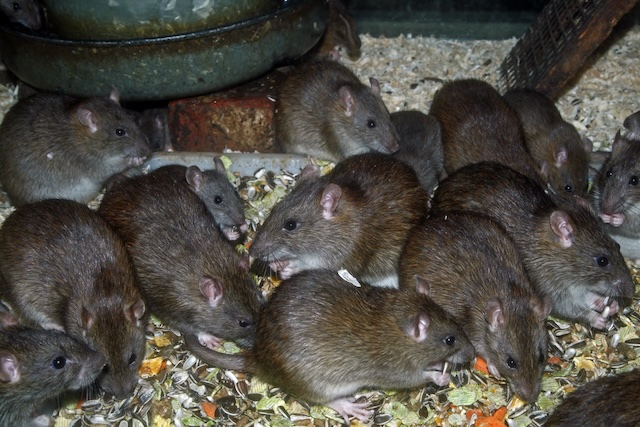Rats are often thought of as dirty and dangerous, but what happens inside their nests is quite different. Rats, especially females, are very good at taking care of their young in their nests. Understanding these behaviours helps us understand how complicated and surprisingly family-like these animals are.
1. The urge to build a nest: Rats are naturally good at building nests. When a female rat is getting ready to give birth, her nesting instincts take over and make her a safe and cozy place for her babies to live. This behaviour of nesting isn’t just done to keep babies safe; it’s also a way for the mother to mark her area and feel safe.
**2. Care for the Mother: After giving birth, female rats show focused care for the mother. They are known to be good moms who regularly nurse and groom their puppies. The mother rat will keep her babies warm, protect them, and feed them to make sure they are healthy. For example, they make sure the nest is clean, free of bugs, and at the right temperature for the young rats.
Rats like to live with other rats, so they often live together. Rats live in groups, so the nest is more than just a place for the mother and her babies. Rat females in the same social group may help care for the young, making the setting cooperative and helpful. This way of living together helps the group stay alive and builds a feeling of community.
4. Teaching and Learning: As the rat pups get bigger, the nest turns into a kind of school. Playing with their babies is how mothers rats teach their young important skills for life. This includes cleaning habits, ways to talk to each other, and ways to hunt. The nest is a safe place for the young rats to learn and explore while being watched by their mother and other more experienced rats in the group.
5. Protective feelings: A mother rat has strong feelings to protect her young. She will fight very hard to protect her nest and babies from any possible danger. This protective behaviour isn’t just limited to close family members; female rats in a group work together to keep the nest safe. The rats work together to protect the nest, which makes their ties stronger.
Growing up and becoming independent: As the rat pups get older, the nest changes. The young rats use it as a school ground to learn how to be on their own. The mother pups encourages them to explore and guides them, but finally the pups leave the nest to see what’s out there. The rat society is able to adapt and stay strong because of this process.
**7. Adaptability in Nesting: Rats are flexible animals, and the way they build their nests shows this. Rats can make nests in a lot of different places, like holes, attics, basements, and even inside walls, depending on their surroundings and the resources they can find. This ability to change helps them stay alive in a wide range of environments.
Note 8: Rats’ ways of reproducing are closely linked to the way they take care of their young in their nest. Rats have a lot of babies, and the caring ways they show for their young help them stay alive. Some people might think of them as pests, but their ability to survive and change shows how well their ways of reproducing and caring for young work.
Rats are usually seen as a problem in cities, but if you look more closely at how they build their nests, you can see an interesting world of family care and living together. Learning about the caring behaviours that happen in a rat’s nest gives you a more complete picture of these animals, showing how adaptable, social, and family-oriented they are.
